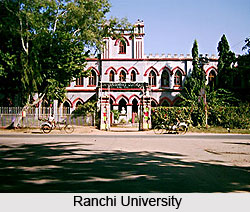 Kurukh language is a popular tribal language of eastern and central region of the country. This Indian tribal language is also known as Kurux. This language belongs to the Dravidian language group. Kurukh is mainly spoken by the Oraon `Kurukh` tribe, which is a tribal (Adivasi) group of Bihar, Orissa, Madhya Pradesh, Jharkhand, West Bengal and Chhattisgarh. This tribal group is also found in the northern region of neighbouring country of Bangladesh. Kurukh tribal language is very closely associated with Brahui language and Malto or Paharia language. Moreover, this tribal language also has some connection with Sauria Paharia and Kumarbhag Paharia languages. These two languages are sometimes collectively referred to as Malto language. Further, it is also called as Oraon. Kurukh language that belongs to the Dravidian group of languages is further divided into northern Dravidian family of languages. However, this language should not be confused with the Nepali Kurukh language.
Kurukh language is a popular tribal language of eastern and central region of the country. This Indian tribal language is also known as Kurux. This language belongs to the Dravidian language group. Kurukh is mainly spoken by the Oraon `Kurukh` tribe, which is a tribal (Adivasi) group of Bihar, Orissa, Madhya Pradesh, Jharkhand, West Bengal and Chhattisgarh. This tribal group is also found in the northern region of neighbouring country of Bangladesh. Kurukh tribal language is very closely associated with Brahui language and Malto or Paharia language. Moreover, this tribal language also has some connection with Sauria Paharia and Kumarbhag Paharia languages. These two languages are sometimes collectively referred to as Malto language. Further, it is also called as Oraon. Kurukh language that belongs to the Dravidian group of languages is further divided into northern Dravidian family of languages. However, this language should not be confused with the Nepali Kurukh language.
Kurukh language is basically written in Devanagari script. This script is used in writing several prominent languages like Hindi language, Marathi language, Sanskrit language and various other Indo-Aryan languages. Kurukh tribal language is chiefly spoken by a huge number of people belonging to the Oraon and Kisan tribal communities. However, in spite of the huge number of speakers of this language, it is still considered at a risk for extermination. Interestingly, Government of Jharkhand and Chhattisgarh has commenced Kurux language in those schools where there is a majority of the Oraon or Kurukhar students. Kurukh is being taught in several affiliated colleges and universities like for instance Ranchi University and Siddhu Kanhu University. Moreover, several popular magazines like Nam Kurkhat, Jharkhand Dhara, and more also publish articles in this particular language. A number of books in Kurukh language are also being published from Orissa, Jharkhand, Chhattisgarh, West Bengal and Madhya Pradesh. In the year 2000, the Bible was translated into Kurukh language.
It is sad that this language is quickly disappearing from the urbanized areas of Ranchi. Kurux has the vigesimal number systems and it does not have any generic kinship terms. Aspirates of voiced and voiceless nature have become an integral part of the phonological system of Kurux. Apart from Kurux and Oraon, Kurukh tribal language also has a number of other substitute or alternative names such as Kunrukh, Urang, Morva, Kunna and Birhor. It has two chief dialects and these are Oraon and Kisan. Thus, it can be concluded by saying that the highest percentage of Kurukh speaking people reside in Gumla and Ranchi.



















